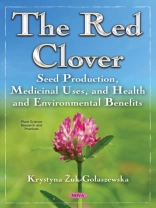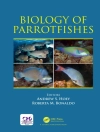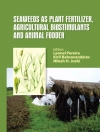Red clover (Trifolium pratense L.) is one of the many species belonging to the genus Trifolium, which are widely cultivated around the world. It is a perennial plant and offers permanence that determines its uses as well as environmental and agronomic requirements. Red clover is grown mainly for seeds and biomass. The most important environmental factors that affect red clover yield are soil conditions, temperature and precipitation during the growing season. Key agronomic factors include sowing date, cultivation regime, fertilization, plant protection and harvesting date. The species can be grown in pure and mixed stands (with alfalfa, cereals and various grass species). Newly bred triploid varieties of red clover are characterized by desirable growth habit traits and yield components as well as high yield. Red clover has many applications. It is currently experiencing a revival of interest as a traditional folk remedy. The species acts as a rich source of compounds with expectorant, analgesic and antiseptic properties. The callus from Trifolium pratense has been found to exert inhibitory effects on fungal and bacterial strains. Red clover contains isoflavones, anthocyanin pigments and phytoestrogens, which may help reduce the risk of heart disease, breast cancer and endometrial cancer; it also alleviates menopausal symptoms. Red clover lowers blood cholesterol levels and helps prevent prostate cancer. Red clover ointments are used to treat skin diseases, including psoriasis. Red clover provides biomass for livestock nutrition and/or biogas production. It has high nutritional value and constitutes valuable raw material for silage making. Red clover can be grown with grasses, barley, oats and wheat, thus providing various types of fodder with high biological value and natural high-protein feed. When grown as a cover crop, red clover fixes and supplies nitrogen to cereal crops. It also helps break disease and insect cycles, especially in plantations protected against weeds. The crude protein content of red clover decreases with advancing maturity. Due to its permanence, this perennial plant contributes to environmental protection and anesthetization; it helps prevent soil erosion, and is used in phytoremediation and barren land management schemes.
Krystyna A»uk-Golaszewska
Red Clover [PDF ebook]
Seed Production, Medicinal Uses, and Health and Environmental Benefits
Red Clover [PDF ebook]
Seed Production, Medicinal Uses, and Health and Environmental Benefits
Koop dit e-boek en ontvang er nog 1 GRATIS!
Formaat PDF ● Pagina’s 130 ● ISBN 9781536118001 ● Editor Krystyna A»uk-Golaszewska ● Uitgeverij Nova Science Publishers ● Gepubliceerd 2017 ● Downloadbare 3 keer ● Valuta EUR ● ID 7217053 ● Kopieerbeveiliging Adobe DRM
Vereist een DRM-compatibele e-boeklezer












